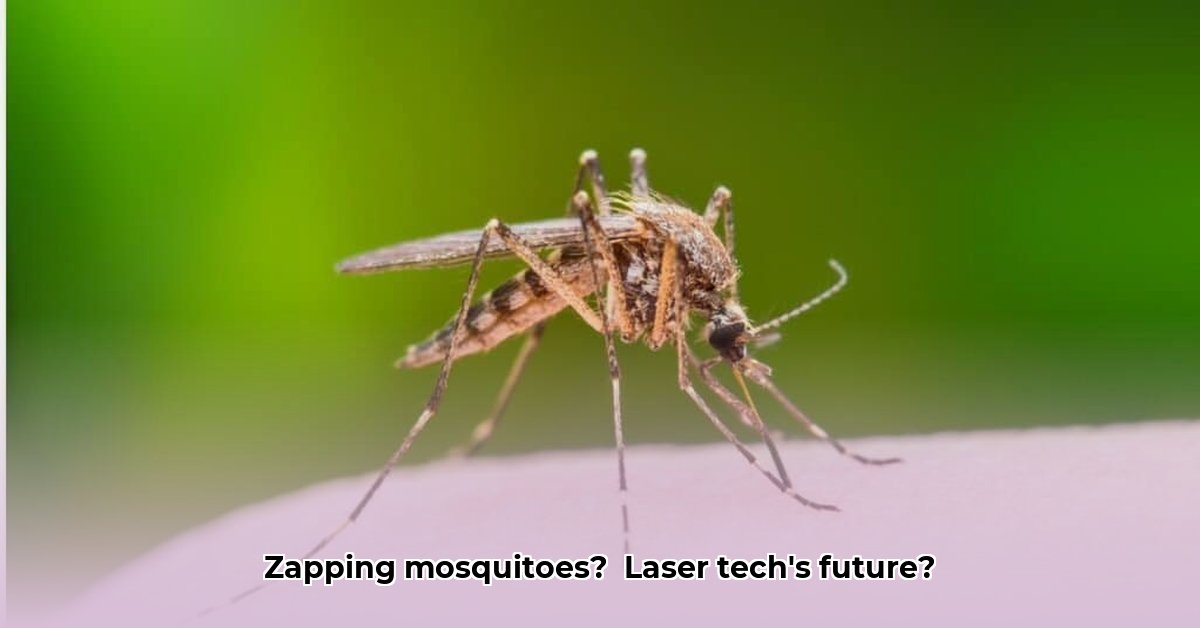
Mossies are a right nuisance, especially here in South Africa, and the diseases they spread are a serious concern. The Photon Matrix, a laser-based mosquito zapper forming part of the Mosquito Air Defence system, promises a high-tech solution. But is this futuristic gadget a game-changer, or just another expensive gizmo? This review delves into its technology, market potential, safety, and overall viability.
The Photon Matrix: A Detailed Examination
The Photon Matrix uses lasers and advanced optics to target and eliminate mosquitoes, claiming to zap up to 30 per second. Impressive, but this requires independent verification. The system employs LiDAR (Light Detection and Ranging) for precise targeting – think of it as a super-accurate laser pointer, but instead of a whiteboard, it’s a mosquito. However, we need independent testing to confirm these bold claims.
Under the Hood: Tech Specs and Real-World Performance
The Photon Matrix uses high-end components, resulting in a hefty price tag, estimated between $468 and $900. This could limit its accessibility, especially in areas struggling with mosquito-borne diseases where affordability is key. Can this device compete with far cheaper alternatives? Only time, and rigorous testing, will tell.
Its effectiveness against various mosquito species also remains unproven. Will it work equally well against all types? How will it perform in rain or wind? More research is crucial before we can assess its true real-world capabilities. We need data, not just marketing hype. What independent studies are currently underway to validate these claims? This is a crucial question for potential investors and public health organisations.
Market Potential: Navigating a Competitive Landscape
The Photon Matrix faces steep competition. The high price is a significant hurdle. Numerous more affordable mosquito control methods already exist. Will consumers—and, crucially, health organisations—pay a premium for this high-tech solution? Success hinges on transparency and trust; the manufacturers must openly address the device's limitations and safety concerns.
Safety First: Addressing Potential Risks
Laser use raises critical safety concerns. Stray beams could cause eye injuries. What about the impact on other insects and the broader environment? The manufacturer assures us the device meets safety standards, but independent verification is paramount before these reassurances can be considered credible. Without it, the system remains a risky proposition.
Regulation and the Path Forward
The regulatory landscape presents another significant challenge. Laser devices are strictly regulated, and the Photon Matrix must meet all relevant safety and environmental standards internationally. This is not just about compliance; it's about building public trust and confidence.
Summary of Key Advantages and Disadvantages
| Feature | Advantages | Disadvantages |
|---|---|---|
| Technology | Innovative laser technology and LiDAR for precise targeting | High manufacturing cost translating to a high price point. |
| Effectiveness | Potentially high kill rate (if claims are verified) | Effectiveness against various species and environmental conditions unknown. |
| Safety | Manufacturer claims adherence to stringent safety standards. | Potential for eye injury and impact on non-target insects requires investigation. |
| Market Viability | Addresses a critical public health problem. | High price point compared to existing solutions. |
Assessing Safety Risks of Laser-Based Mosquito Control
The Photon Matrix exemplifies a cutting-edge approach to pest control, yet a paramount question remains: How can we effectively assess the safety risks of laser-based mosquito control devices? Let's explore this crucial issue.
Understanding Laser Classifications and Potential Hazards
Different lasers carry varying risks. The Photon Matrix's laser class—a critical piece of information—determines its potential for harm. Class 1 lasers are harmless, while Class 4 lasers pose serious risks of eye and skin damage. Knowing this class is a fundamental first step in any safety assessment.
Potential harms include eye injuries (retinal damage, blindness), skin burns, harm to non-target organisms (beneficial insects, birds, etc.), and long-term environmental impact.
A Structured Risk Assessment Methodology
Assessing the safety of laser-based mosquito control devices demands a structured approach, combining expert knowledge with rigorous testing:
- Hazard Identification: List all potential hazards.
- Risk Evaluation: Determine the likelihood and severity of each hazard.
- Risk Mitigation: Develop strategies to minimize or eliminate these risks.
- Monitoring and Review: Continuously monitor and reassess risks.
Regulatory Compliance and Standards
While international standards exist (e.g., IEC 60825), specific regulations vary by location. Compliance is not simply about avoiding legal trouble; it's about ensuring public safety.
The Photon Matrix shows promise, but its long-term viability rests on addressing cost, safety, and efficacy concerns. Further research and independent verification are vital before we can fully evaluate its potential.